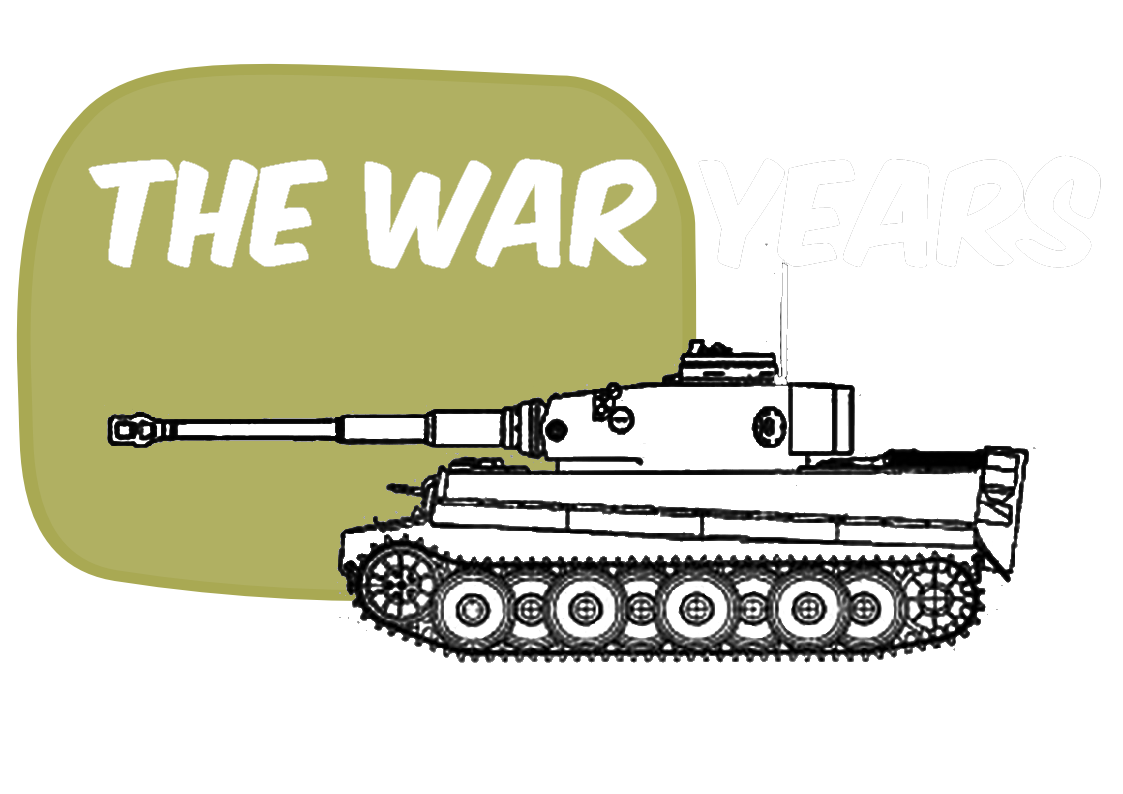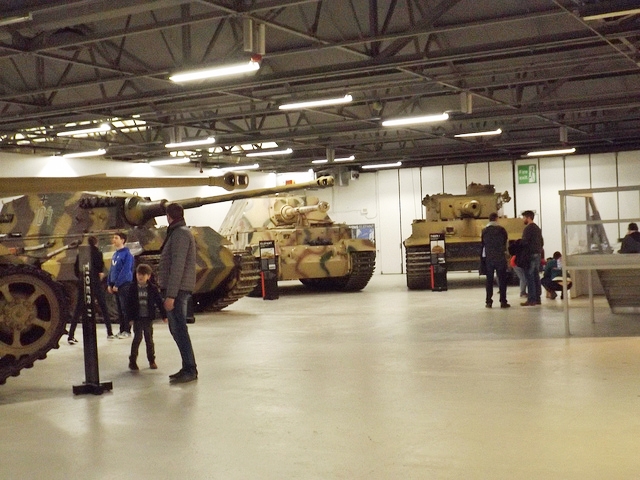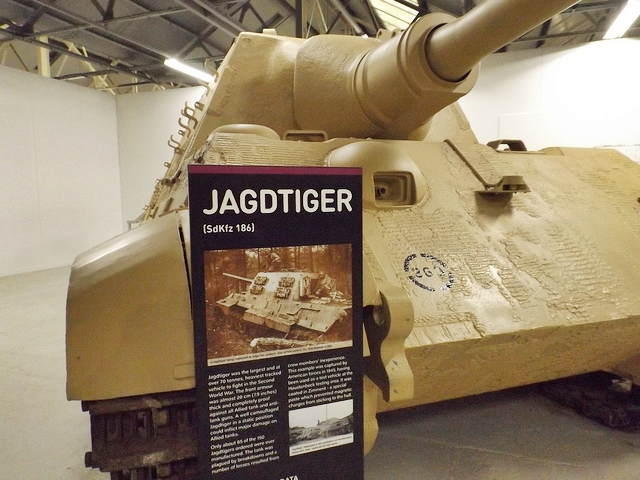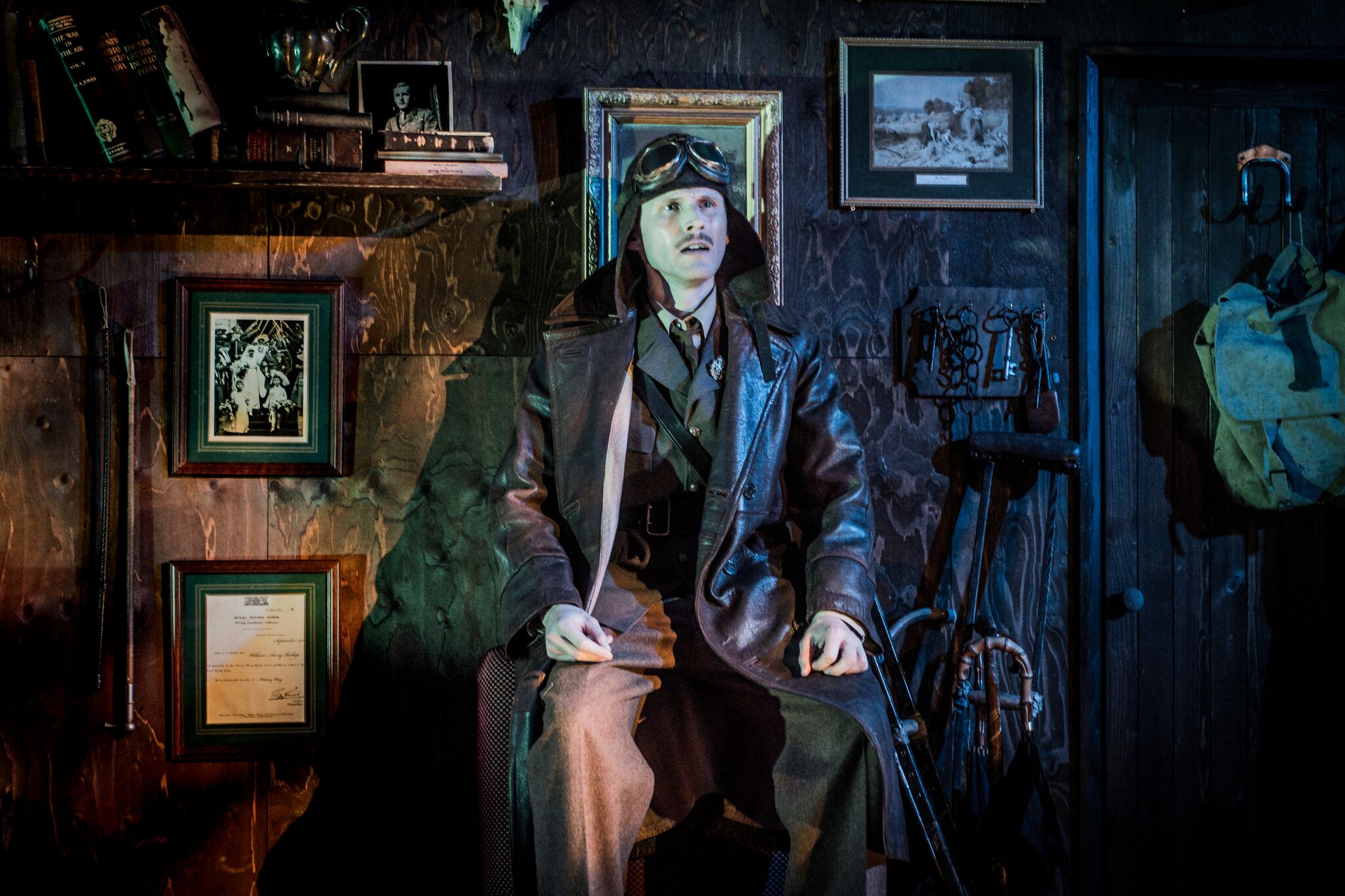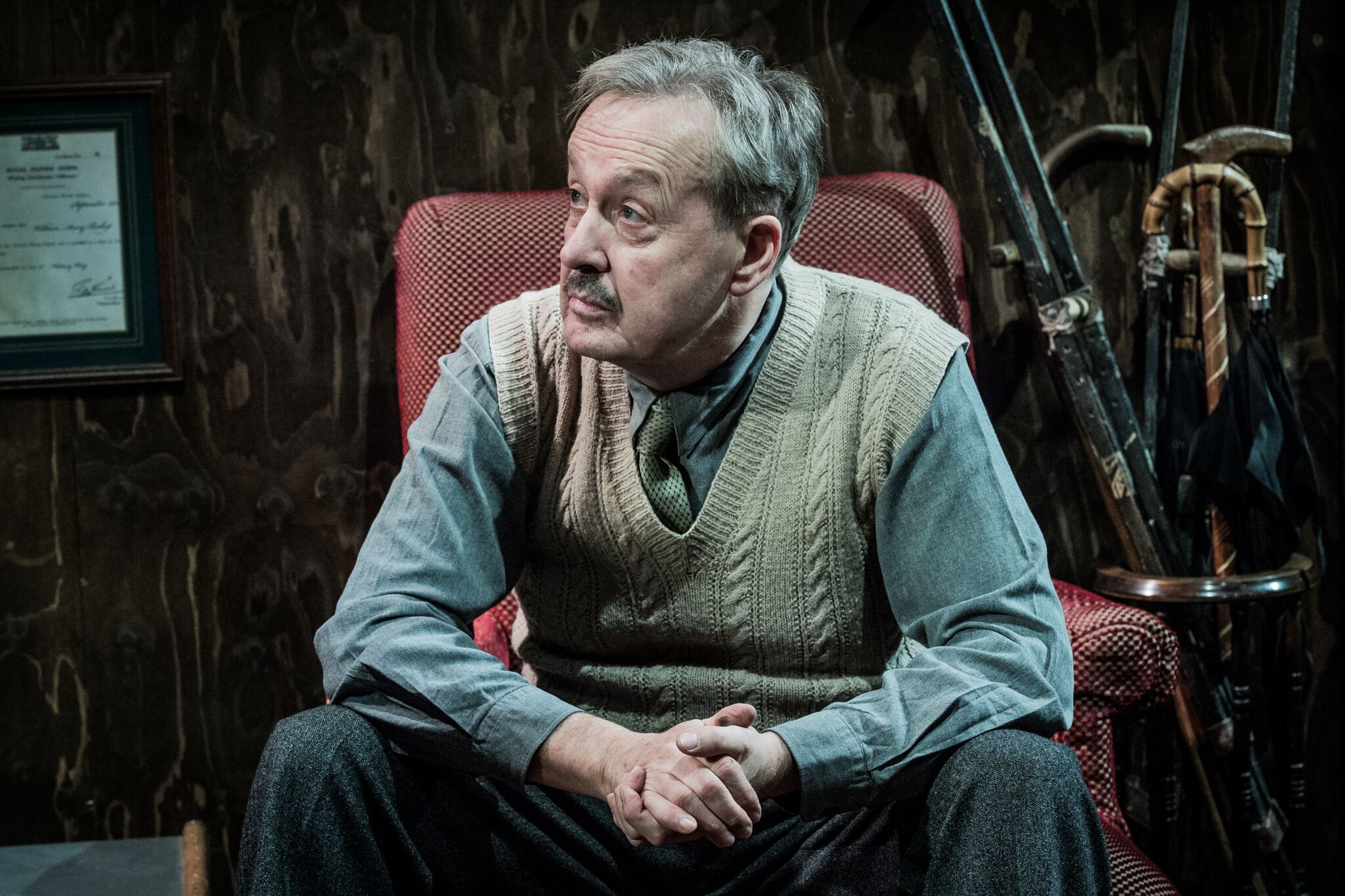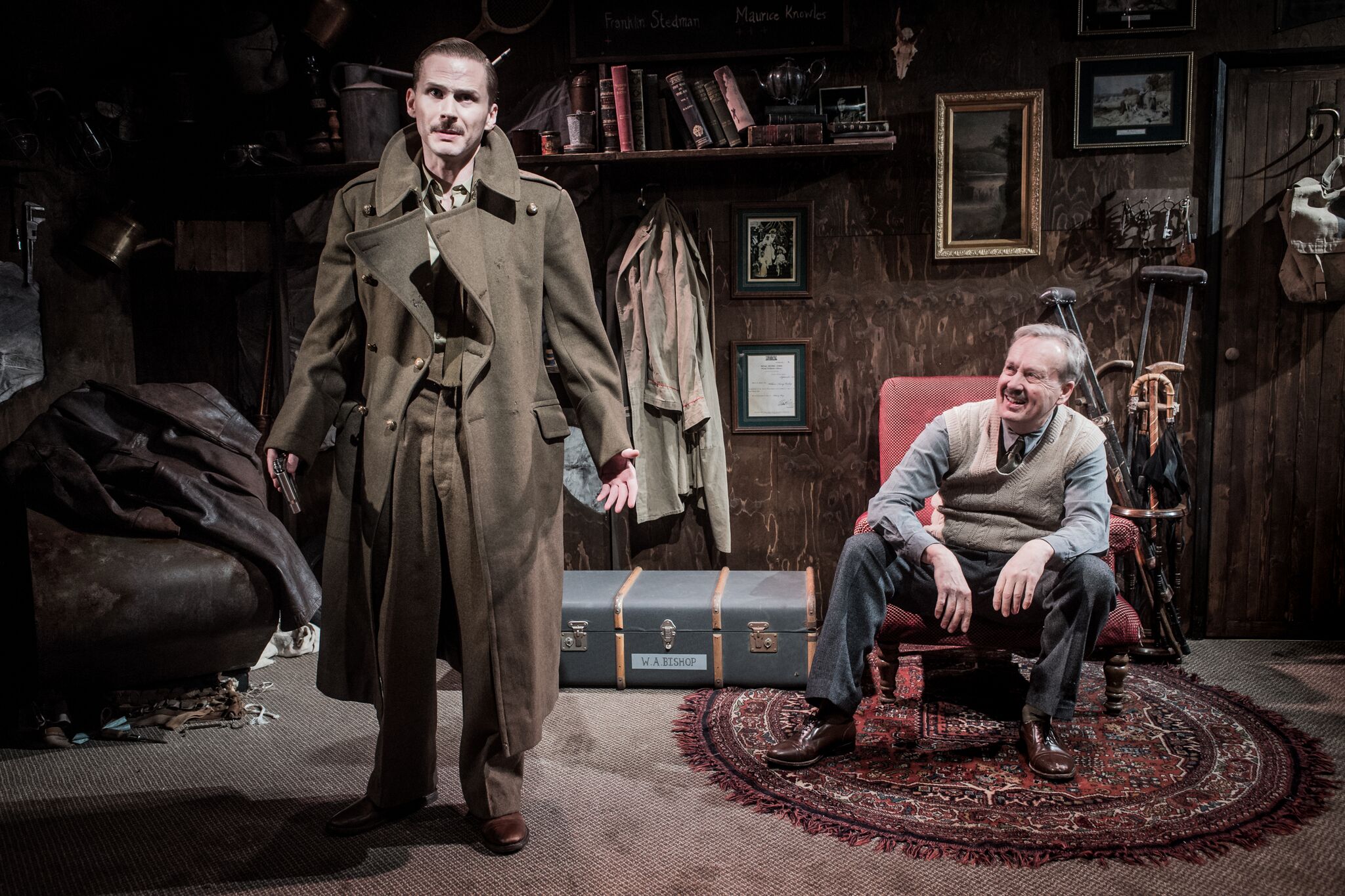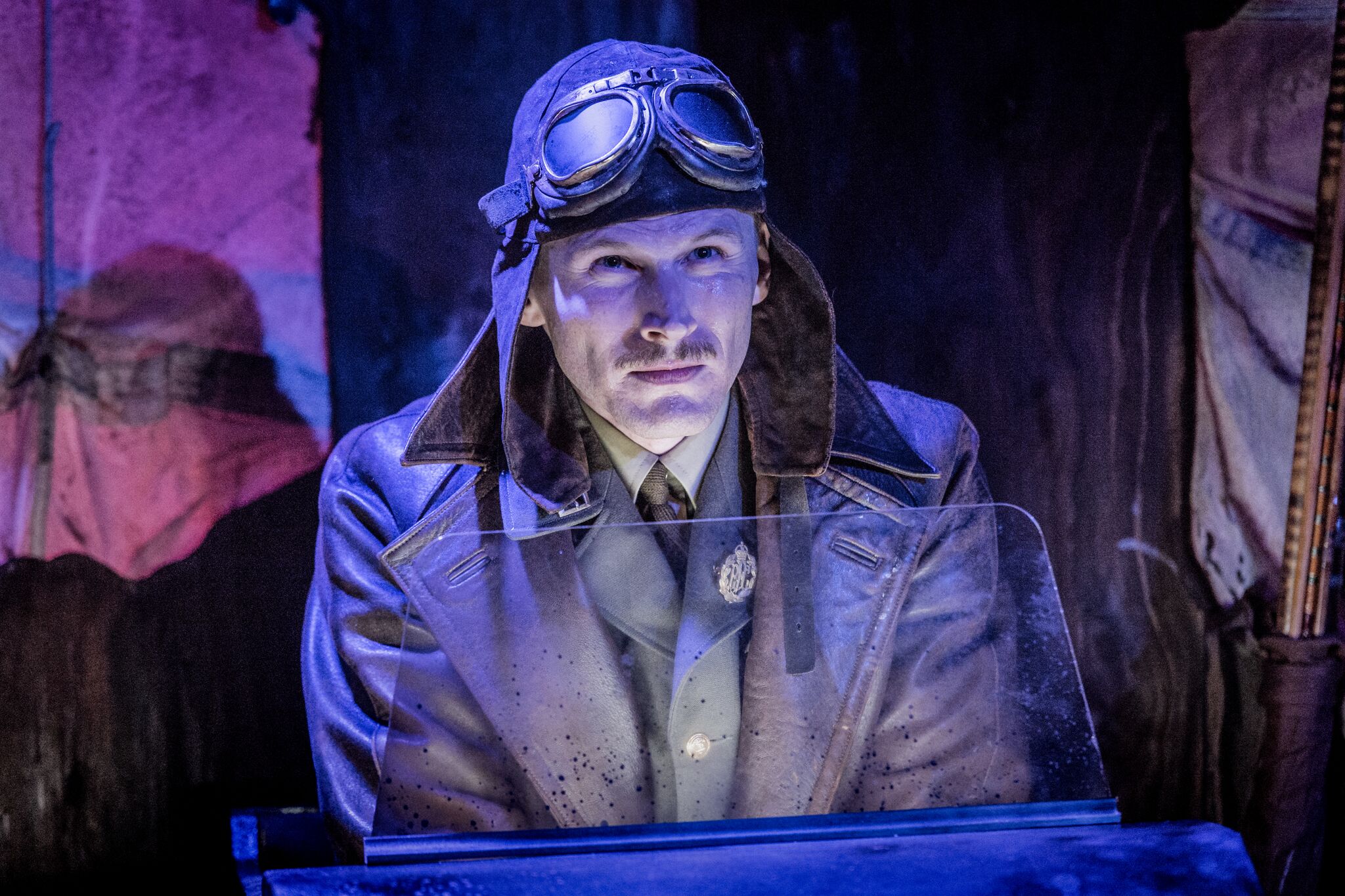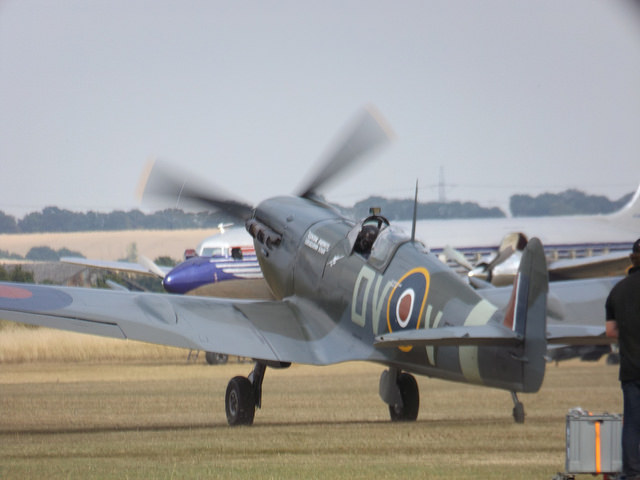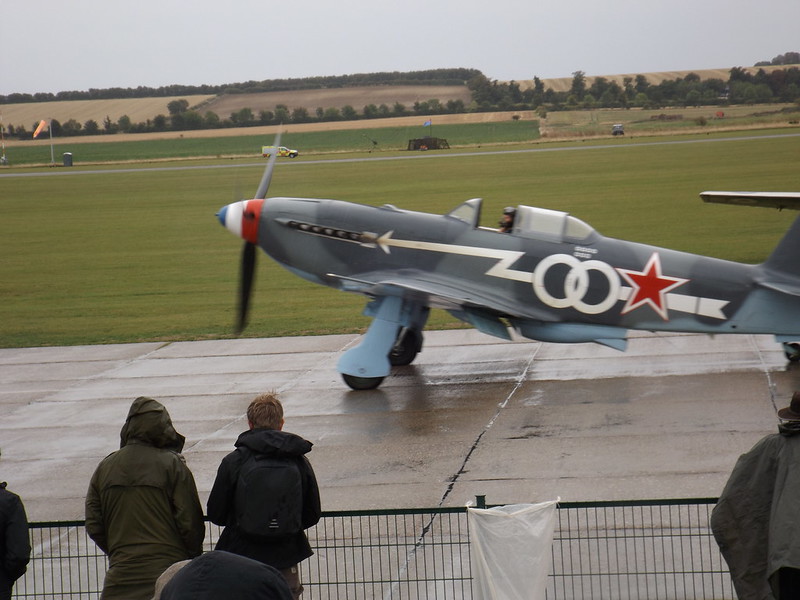
Blog
The Second World War resulted in the deaths of around 85 million people. Additionally, tens of millions more people were displaced. However, amid all the carnage, people demonstrated remarkable courage, fortitude, compassion, mercy and sacrifice. We want to honour and celebrate all of those people. In the War Years Blog, we examine the extraordinary experiences of individual service personnel. We also review military history books, events, and museums. We also look at the history of unique World War II artefacts, medals, and anything else of interest.
Face to Face with the German Tiger tank
In this article, we look at the merits and deficiencies of the German Tiger tank during World War Two, and the muddled strategic thinking that drove the project forward.
The Tiger tank (Panzerkampfwagen VI Tiger Ausf. E) entered service at the end of 1942. It was not a great start. The tank was deployed over unsuitable terrain, limiting its effectiveness. The early production Tigers were plagued with technical problems including dangerous engine fires. Many of these early teething problems were symptoms of the tank being rushed into service without adequate development and testing. However, the Tiger was also over-engineered. The result was a highly complex, often temperamental weapons system that required extensive preventative maintenance and careful handling.
Fighting the Wrong War
Manufactured by Henschel, the Tiger I Ausf. E was the product of creaky strategic thinking. The Tiger was not built in response to Soviet tanks like the T-34 and KV-1. Instead, the Tiger was designed as a “sledgehammer” to smash holes in the enemy’s lines, which support units could then exploit. However, the Germans were already fighting a largely defensive war by late 1942. The days of the blitzkrieg were over. A far better solution would have been to concentrate all manufacturing resources on producing the reliable, very effective Panzer IV main battle tank (MBT).
60 Tonne Sledgehammer
Although the Tiger had many deficiencies, it was not without merit. In the hands of a well-trained and experienced crew who understood the Tiger’s advantages, the tank could prove a formidable opponent. Tank design is about achieving the right balance of mobility, armour and firepower so the vehicle can perform its primary task. Clearly, the Tiger was designed as a sledgehammer, and that’s what the panzer forces got. The Tiger weighed in at just under 60 tonnes, with 100mm frontal armour, 80mm side and rear armour, two MG-34 machine guns, and a high velocity, flat trajectory 88mm main gun.
40 Percent Reliable
The Tiger’s 88mm main gun fired both armour piercing (AP) and high explosive (HE) shells. Officially, the tank could store 92 rounds. However, crews typically packed as many additional shells into every available space as possible. Although the tank was underpowered by the Maybach HL230 700-horsepower petrol engine, it was surprisingly quick and agile on good ground. A semi-automatic gearbox and steering wheel also made the tank easy to drive. Nevertheless, even when the tank was well maintained and supported by a good workshop company, the Tiger’s overall reliability was abysmal. Most Tiger Is were only operational 40 per cent of the time. The reliability of other Tiger variants such as Tiger II Ausf. B, Panzerjager and Jagdtiger were even worse.
Recovery No Easy Task
Naturally, broken down and battle-damaged tanks need to be recovered, whenever possible. Unfortunately, the Tiger’s size and weight often worked against easy recovery. Typically, it took two or three prime movers (tractors) to tow a Tiger to safety. Panzer units were under strict orders not to use one Tiger to tow another, as this could result in damaging the second tank. However, necessity often trumped orders and Tigers frequently towed one another. Later, specialist recovery tanks were introduced, such as the Bergepanther, but these vehicles were always in short supply.
The Importance of Training
How well or poorly an individual tank performs is mainly reliant on the quality and training of the crew. As the war progressed and losses mounted, the German army struggled to provide adequate manpower or training to its panzer forces. Subsequently, overall performance suffered. However, the Germans valued the lives of their panzer crews, and the Tiger provided a separate escape hatch for each man. Many Allied tanks were not designed as well, resulting in men being trapped inside burning vehicles after they had been hit. When it came to training Tiger crews, the official manual was surprisingly innovative. The Tigerfibel aimed to convey complex battlefield instructions in a simple and memorable manner to young recruits using cartoons, jokes and risqué pictures of women. Even today, you can buy a copy in English translation on Amazon.
The Unsinkable Tiger
Thanks to a combination of thick, seemingly impervious frontal armour, the legendary 88mm gun and copious amounts of Nazi propaganda, the Tiger quickly gained a reputation for impregnability. Of course, the Tiger was as impregnable as the Titanic was unsinkable. In reality, the Tiger’s main value came from its ability to stand off and deal with its opponents at a distance. However, even with mid and late-production improvements, by 1944 the Tiger was fighting a losing battle.
The Victory of Mass Production
The Germans went for quality over quantity in tank production, but a lack of time and resources meant they never really delivered on quality. They also chose to pursue an obsolete military strategy at odds with the realities of their situation. In contrast, the Allies went for simple, reliable vehicles they could mass-produce in vast quantities. Over 110,000 Soviet T-34 and American M4 Sherman medium tanks were manufactured compared with just over 1,300 Tiger I Ausf. E. That’s 85 to one, and only half the Tigers would be fit for service at any time. What’s more, the Allies didn’t stand still. They improved their existing tank forces and introduced new, heavier tanks. The British Comet, for example, entered service in December 1944. Ultimately, the Tiger only ever won the propaganda war. In all other respects, the Tiger was a costly, unreliable failure.
Review: Billy Bishop Goes to War at the Jermyn Street Theatre
In this blog post, we review the latest production of the musical drama Billy Bishop Goes to War at the Jermyn Street Theatre. The production recounts the extraordinary life and career of Canadian WW1 flying ace Billy Bishop. The play is running Wed, 31st October - Sat, 24th November 2018.
Usually, just two words would deter me from buying tickets to a show: musical theatre. So, it was with some trepidation that I accepted an invitation to watch the latest production of Billy Bishop Goes to War at the Jermyn Street Theatre, London. However, the moment actor Oliver Beamish began playing the piano and started to sing, I immediately knew I could strap myself in, sit back and enjoy the ride. In that tiny theatre, as intimate as any cockpit, with consummate professionals at the controls, we would navigate the career of WW1 Canadian flying ace Billy Bishop.
Written by John Gray with Eric Peterson, Bill Bishop Goes to War tells the wartime story of William (Billy) Avery Bishop during the period 1914 to 1917. The play also touches briefly on Billy’s military contribution during the Second World War. Billy made for an unlikely hero. He showed no promise as a young cadet at the Royal Military College of Canada (RMC), where he failed his first year and was caught cheating. He was somewhat accident-prone, and suffered bouts of stress-related illness. Nevertheless, he found himself commissioned as a cavalry officer and shipped across the North Atlantic to England in 1915. Two ships in his convoy were torpedoed by German U-boats with the loss of over 200 men.
While stationed in France during the summer of 1915, Billy transferred to the Royal Flying Corps (RFC) as an observer. In March 1917, he became a pilot joining the 60 Squadron at Filescamp Farm near Arras. At that time, the average life expectancy of a new pilot was just 11 days. Once again, Billy’s career as a pilot got off to a shaky start. He crash-landed his aircraft during a practice flight in front of General John Higgins. However, within a few short months, Billy was awarded the Victoria Cross for a solo attack against a German aerodrome. By August 1917, he had surpassed the late Albert Ball’s tally of “kills”. Billy was on his way to becoming one of the conflict’s greatest fighter aces. After a brief period of leave in Canada, where he got married, Billy returned to the fray. Eventually, he was promoted out of harm’s way as Officer Commanding-designate of the Canadian Air Force Section of the General Staff, Headquarters Overseas Military Forces of Canada. By the war’s end, he had claimed 72 aerial victories, including two balloons.
During World War Two, Billy Bishop was appointed Director of the Royal Canadian Air Force and placed in charge of recruitment. In 1942, he appeared as himself in the Hollywood movie Captains of the Clouds. In 1944, Billy’s old foe stress-related illness forced him to resign. He died in his sleep on 11 September 1956, aged 62.
The Jermyn Street Theatre is a small, subterranean gem. The intimacy of the space and excellent set design by Daisy Blower created the feeling of being in a First World War dugout. Packed with the memorabilia of the older Billy’s extraordinary life, even the most mundane items such as a suitcase and an old red armchair were transformed into meaningful props. In a time when audiences can be blasé about multi-million dollar movie special effects, it was wonderful to see a swinging lamplight create the illusion of movement as Billy crossed the ocean aboard the ship Caledonia. A vessel designed to ship cattle, not men.
First staged in 1978, this revival of Billy Bishop Goes to War has more than a touch of the BBC sitcom Blackadder Goes Forth. Directed by Jimmy Walters, this musical drama moved seamlessly between comedy and tragedy. Actors Charles Aitken and Oliver Beamish did a brilliant job of portraying Billy in his youth and later life. They immediately established a wonderful rapport with the audience. Oliver Beamish provided the piano and musical accompaniment while Charles Aitken brought amazing physical energy to the performance. The two actors played an additional 17 characters. I particularly liked Charles Aitken’s Lady St. Helier, Billy’s patron in London society. He seemed to be channelling actress Frances de la Tour.
As the Jermyn Street Theatre is a registered charity, I was a little disappointed that the small auditorium was not sold out, and about a third of the seats were empty. I was also surprised the production is only running until 24 November 2018. Just days before the centenary of the end of the First World War, Billy Bishop Goes to War reminds us of the immense courage, perseverance and sacrifice of ordinary men who served in the “Great War”. The drama also examines the tensions between the British establishment and its “colonial” cousins, who were good enough to fight and die for the empire while being widely regarded as second-class citizens. Overall, the show is a wonderful, poignant piece of musical theatre that teaches us ordinary people can do the most extraordinary things.
Production photography courtesy of Robert Workman
World War One Missing Manuscript Returns Home
In this book review we take a look at a lost manuscript of the Great War finally published. Field Dressing by Stretcher Bearer, France 1916 – 1919, is a slim volume of World War One poems by Alick Lewis Ellis. He served as a stretcher bearer with the 2/3rd London Field Ambulance, 54th Division, London Regiment, and took part in the Battle of the Somme, Arras, Ypres and Cambrai.
Field Dressing by Stretcher Bearer, France 1916 – 1919, is a slim volume of World War One poems by Alick Lewis Ellis. He served as a stretcher bearer with the 2/3rd London Field Ambulance, 54th Division, London Regiment, and took part in the Battle of the Somme, Arras, Ypres and Cambrai. During his time on the Western Front, Alick took to writing poetry to capture and make sense of his experiences. His notebook of poems was lost for nearly a hundred years until someone anonymously handed it to Dan Hill at the Herts at War Society in 2017. Dan Hill subsequently tracked down Alick’s remaining family, and together they worked to publish Field Dressing by Stretcher Bearer. To recognise the essential role played by the Royal Army Medical Corps (RAMC) and military mental health charities, a proportion of the book’s profits will go to Combat Stress and Veterans With Dogs.
Alick Lewis Ellis appears to have led an unremarkable life. He had a basic education and looked forward to a career as a grocer if the war had not intervened. His war poems might not have the literary complexity and construction of Wilfred Owen, Robert Graves and Siegfried Sassoon. Nevertheless, they have merit and share many common themes with the famous war poets of his generation. His poems reflect the direct experiences of war. They celebrate their comrades, condemn the war leaders, scorn the indifference of many civilians, and express a longing for home. Unfortunately, we know nothing of Alick’s creative influences or inspirations. The documentary of his life is reduced to a few faded photos, sketchy family memories and military service records.
Regardless of the many horrors and privations of the Western Front, Alick seems to have maintained his sense of humour. In poems like Revenge, he jokes about the quality of Army food, especially the rock-hard biscuits issued to the troops. In Training and Reality, he uses humour to illustrate just how poorly depot life and parade ground drill prepared soldiers for combat. After the war, Alick returned to working in retail, but little else about his life is known. Sadly, he passed away in November 1953. Alick’s poems might not be the greatest literary works, but they are honest, funny and poignant. Regrettably, they tell us familiar stories as old as war itself.
Billy Bishop Goes To War
In this blog, we share the official press release for the WWI musical-drama Billy Bishop Goes To War at the Jermyn Street Theatre, London, between 31st October and 24th November 2018. This striking drama is based upon the true story of young Billy Bishop, a failing military college student who became Canada’s indomitable flying ace, the most successful pilot of his generation.
Jermyn Street Theatre, 16b Jermyn Street, London SW1Y 6ST
Wednesday 31 October – Saturday 24 November 2018
Coinciding with the centenary of the end of World War I, Proud Haddock is reviving Billy Bishop Goes To War as part of their War Season and Jermyn Street Theatre’s Rebels Season. This striking drama is based upon the true story of young Billy Bishop, a failing military college student who became Canada’s indomitable flying ace, the most successful pilot of his generation.
Billy Bishop Goes To War will star Charles Aitken (The Knick, Cinemax; Happy Death Day, Universal Pictures; King Lear, Royal Shakespeare Company) as Billy Bishop with Oliver Beamish (Coronation Street, ITV; Blood Brothers, Lyric Theatre; War Horse, The New London Theatre) as the Older Billy Bishop, who will also provide the piano and musical accompaniment. Between them, they will play a further 17 parts as they recount this extraordinary tale.
In 1914, Billy Bishop, aged only 20, signed up to fight in the Great War. A failing and bullied student, he overcame intense prejudice and astonishing danger to receive his wings and become the top fighter pilot. Through a combination of bravery and sheer luck, Billy was able to find his place and prove his worth. He became a true Canadian hero.
Brought to life with songs of the period, Billy Bishop Goes To War vividly transports the audience across the landscape of World War I, from the thick mud of No Man’s Land to the drawing rooms of the British aristocracy. This compelling and darkly comic drama interrogates the nature of heroism and its cost while shining a light on the often-neglected complexities of Britain’s colonial past during the War.
Written by John MacLachlan Gray in collaboration with Eric Peterson, the play returns to London for the first time in over 35 years. Billy Bishop Goes To War is the deceptively moving and totally gripping account of one man’s life in World War I.
Director Jimmy Walters comments, Proud Haddock’s War Season continues with Billy Bishop Goes To War. This is a true story with lots of heart. Billy wasn’t the most academic student, was bullied at school and faced prejudice when he arrived in England during the First World War yet he overcame all of this to become the greatest fighter pilot of his generation. It’s an inspiring story that is a privilege to revive.
For more information download a copy of this press release.
To book ticket visit http://www.jermynstreettheatre.co.uk/. The play runs between Wednesday 31October and Saturday 24 November, 2018.
Spitfire September
In this post, we review a Spitfire September. First, we take a look at the new Spitfire documentary film. Next, the Battle of Britain Air Show at IWM Duxford, and finally, John Nichol’s book, Spitfire: a Very British Love Story. Tally-Ho!
The 15th of September is Battle of Britain day. It commemorates a turning point in the struggle for aerial supremacy in the skies over Britain fought by the RAF and German Luftwaffe during the summer and autumn of 1940. German daylight raids would eventually cease by the end of October, and Operation Sealion, the German codename for the amphibious invasion of southern England, would be cancelled. It was Nazi Germany’s first significant defeat. A victory won by a handful of daring pilots from across the globe and two iconic aircraft: the Hawker Hurricane and Supermarine Spitfire. However, one aircraft would go on to capture the hearts and imagination of the nation. Since 1940, the Spitfire has become an enduring symbol of courage, fortitude, ingenuity and Britishness.
Spitfire – Inspiration of a Nation
My own little September love affair with the Spitfire started with the release of the documentary film Spitfire – Inspiration of a Nation, directed by David Fairhead and Ant Palmer. Narrated by Charles Dance, the film is a biography of both the aircraft and the men and women who flew it. The original music score by composer Chris Roe and mesmerising aerial photography by director John Dibbs work beautifully together. The film was the last onscreen interview given by Battle of Britain fighter pilot and author Geoffrey Wellum, DFC. The film is also the last testament of Mary Ellis, who flew 76 different types of aircraft during the war as part of the Air Transport Auxiliary (ATA). Ferrying aircraft between factories and operational squadrons, the ATA played a vital support role. During her career, Mary delivered over 400 Spitfires safely to their destinations. The film also features a sound recording of aero engineer and chief designer of the Spitfire, R.J. Mitchell, who died of cancer before his creation went into service. Spitfire is a great piece of documentary film-making, and definitely worth the purchase price.
Battle of Britain Air Show
The last event to mark the centenary of the RAF’s first 100 years, the Battle of Britain Air Show was held at the IWM Duxford on the 22nd and 23rd of September, 2018. Unfortunately, the weather on Saturday was extremely challenging with heavy, persistent rain all afternoon. Nevertheless, the event organisers, aircraft owners and pilots did an excellent job. The show told the history of the RAF from its founding at the end of World War One to the modern day. Highlights of the display included two de Havilland Vampire jets, Battle of Britain Memorial Flight (Spitfire, Hurricane and Lancaster), a 617 Squadron flypast (Tornado GR4, new F-35 Lightning II and Avro Lancaster) and the Red Arrows. The show closed with a formation of 18 Spitfires. We also got to see iconic warbirds such as the P-51D Mustang, Boeing B-17 Flying Fortress, Catalina seaplane, Westland Lysander and Soviet Yak 3. Sadly, the MiG-15 was not able to fly due to adverse weather conditions. The Battle of Britain Air Show was a very impressive event, and one I would highly recommend. There’s nothing like seeing 18 Spitfires take to the sky, and listening to the combined roar of all those Merlin and Griffon engines.
Spitfire: a Very British Love Story
Finally, I finished my Spitfire September by reading John Nichol’s book Spitfire: a Very British Love Story. A former RAF pilot, John Nichol knows a thing or two about aerial combat. During the 1991 Gulf War, he was shot down, captured and tortured by Iraqi forces. His book examines the Spitfire’s origins and continued development during the war years when the threat from new enemy aircraft demanded constant innovation. When the Spitfire was finally retired from RAF service in 1957 there had been 47 variants including the Fleet Air Arm’s Seafires. However, the book is really a collection of stories about the different roles the Spitfire played in the lives of frontline pilots such as Allan Scott and Hugh ‘Cocky’ Dundas, and ATA pilots like Diana Barnato Walker. Sadly, unlike the beloved Spitfire, the veterans of the conflict do not endure. John Nichol interviewed around 40 veterans over a three-year period of research and writing his book. By the time it was published only three were still with us. Soon the “greatest generation” will be gone forever, but while Spitfires continue to fly, let us hope they will never be forgotten.
Drama Revival Explores the Tragedy of Chemical Warfare
This autumn, Proud Haddock will bring Tony Harrison’s lyrical play Square Rounds to the Finborough Theatre for its first UK production in nearly 30 years since its rediscovery. Based on true events, this highly original play explores the devastating impact of chemical warfare and weapons of mass destruction.
This autumn, Proud Haddock will bring Tony Harrison’s lyrical play Square Rounds to the Finborough Theatre for its first UK production in nearly 30 years since its rediscovery. This all-female ensemble cast will star Gracy Goldman, Letty Thomas, Amy Marchant, Philippa Quinn and Rujenne Green.
Based on true events, this highly original play explores the devastating impact of chemical warfare and weapons of mass destruction. In the year that marks the centenary of the end of the First World War, this revival has never been timelier.
Performed entirely in verse, Square Rounds follows the lives of Fritz Haber, a German-Jewish chemist, and American inventor Hudson Maxim, brother to Hiram Maxim - the inventor of the machine gun. Through their experiences, this play will shine a light on the intricacies of escalating tensions between nations in the build-up to the First World War.
Fritz has been ordered by the Kaiser in Germany to develop a deadly poison gas to help Germany win the First World War but Hudson is concerned for his country, his brother, and the frightening technological advances employed by America’s new European enemies. Believing his new invention will be an opportunity to escape his status as an outsider in German society, Fritz is unaware that his work will go on to be used to exterminate his own people in the Holocaust just 25 years later.
Director Jimmy Walters comments, “We are delighted to be back taking on another Tony Harrison play, not least because it will be the first of two plays we are staging to mark the 100-year anniversary of the First World War. The content of this play is so fascinating that we all cannot wait to begin rehearsals and explore these characters in even further detail.”
Notes to Editors
Title: Square Rounds
Performance Dates: Tuesday 4 September – Saturday 29 September 2018
Tuesday - Saturday Evenings, 7.30 pm
Saturday, 3.00 pm (from 15 September)
Sunday, 3.00 pm
Running time: 2 hours (including a 15-minute interval)
Age Guidance: 16+
Location: Finborough Theatre, 118 Finborough Road, London SW10 9ED
The Finborough Theatre is a 5-minute walk from Earl's Court Underground Station (District and Piccadilly Lines) and a 5-minute walk from West Brompton Station (District Line and National Rail).
Box Office Tickets are available priced from £18 (£16 concessions) until Sunday 16th September and then £20 (£18 concessions) from Tuesday 18th September. Call 01223 357 851 or book online at www.finboroughtheatre.co.uk
